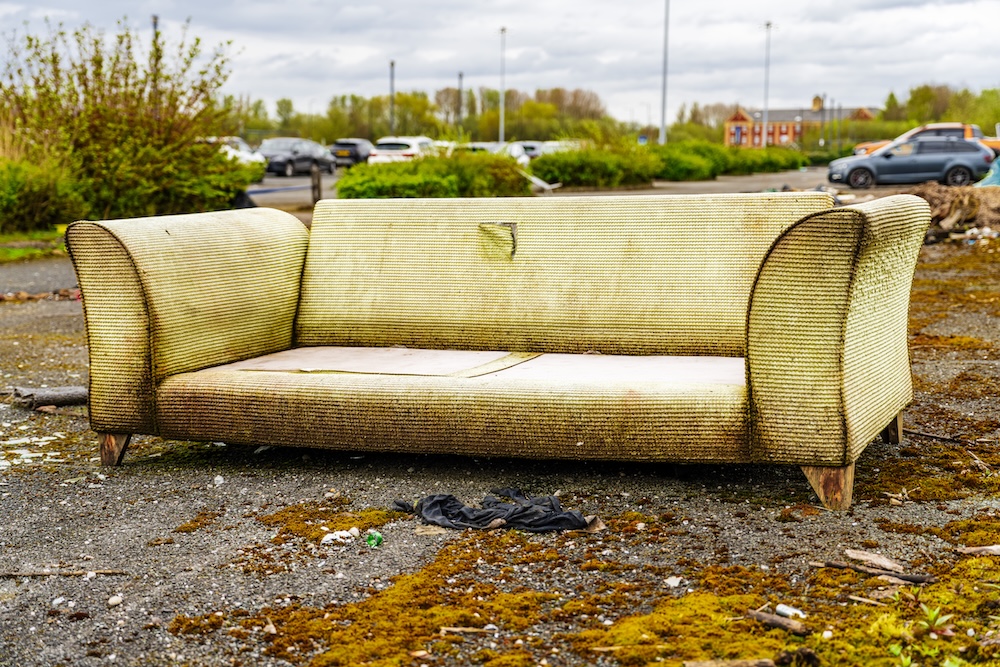Drive past almost any landfill or bulky waste drop-off site, and you’ll spot the familiar shapes: a sagging couch, a splintered dresser, a chipped coffee table. Furniture, once bought with pride, often ends its life far too soon in a heap of discarded belongings. In the U.S. alone, an estimated 12 million tons of furniture and furnishings are thrown away each year—most of it ending up in landfills. And unlike kitchen scraps or paper waste, much of this material won’t decompose for decades, even centuries.
Setting the Stage
The U.S. Environmental Protection Agency reports that the volume of discarded furniture has risen sharply over the last few decades, driven by fast furniture trends, low-cost manufacturing, and shifting consumer habits. Pieces are often made from cheaper materials like particleboard, bonded leather, and plastic laminates, which are difficult to repair and nearly impossible to recycle. This throwaway cycle is not only a waste of resources but also a growing environmental hazard.
Why Furniture Waste Matters
Furniture waste releases methane and other greenhouse gases when it breaks down in landfills. Treated wood and synthetic materials can leach formaldehyde, flame retardants, and other toxins into soil and groundwater. The environmental footprint doesn’t stop at disposal—it starts with the extraction of raw materials, manufacturing, and shipping.
1. Sofas and Couches
Bulky and often upholstered with synthetic fabrics, sofas are among the most commonly discarded furniture items. Many are made with foam cushions that degrade into microplastics and treated fabrics that release chemicals as they break down.
Why They End Up in Landfills
Poor-quality frames and upholstery often fail within a few years, making repairs impractical or more expensive than replacement.
2. Mattresses
Mattresses take up a huge amount of landfill space and are notoriously difficult to recycle due to their mix of metal springs, foam, and fabric.
The Environmental Toll
Foam in mattresses can release volatile organic compounds (VOCs) and take decades to decompose, while steel springs often go unrecovered.
3. Dressers and Wardrobes
Low-cost dressers made from particleboard are common landfill sights. Particleboard contains resins that release formaldehyde and can’t be easily repaired once damaged.
Repair vs. Replace
Solid wood furniture can be refinished and passed down for generations, but modern flat-pack pieces are often built for short-term use.
4. Office Chairs
Swivel chairs with broken hydraulics or torn upholstery are frequently discarded. Their combination of metal, plastic, and fabric makes recycling complicated.
Trend Impact
With the rise of remote work, millions of people purchased budget office chairs in 2020–2021, many of which are now failing.
5. Coffee Tables
Mass-produced coffee tables often have thin veneers that peel or chip, leading to replacement rather than repair.
Missed Opportunity
Refinishing or repurposing these pieces could extend their life and keep them out of landfills.
6. Dining Chairs
Wooden dining chairs can last decades, but those made from particleboard or metal with glued joints often wobble and break within a few years.
Style Turnover
Trends in dining room aesthetics lead many people to replace perfectly functional chairs just to match a new table or décor theme.
7. Bed Frames
Metal frames can be recycled, but many end up in landfills due to convenience or lack of local recycling facilities. Wooden bed frames, especially those made from engineered wood, are often glued together in ways that make them hard to dismantle.
Transportation Challenge
Bed frames are bulky and hard to move, leading some to discard them rather than transport during moves.
8. TV Stands and Media Units
Once a TV size changes or wall-mounting becomes popular, old stands are often tossed. Particleboard versions don’t withstand repeated moving or disassembly.
Waste Stream Shift
As streaming and wall-mounted TVs become the norm, many traditional entertainment centers have become obsolete.
9. Desks
From student desks to home office setups, cheaply built desks rarely survive long-term use. Laminated particleboard tops chip, swell from spills, and sag under weight.
Work-from-Home Boom
Like office chairs, the pandemic saw a surge in desk purchases—many of which are already appearing in waste streams.
Human Impact
The environmental cost of furniture waste extends beyond landfills. Communities near disposal sites face the risk of chemical leaching into water supplies, while manufacturing hubs bear the brunt of resource extraction and pollution. Low-income communities often receive the cheapest, least durable products, perpetuating a cycle of frequent replacement and higher lifetime costs.
Why It Matters Beyond the Immediate
Furniture waste is a symbol of our larger throwaway culture. By normalizing short product lifespans, we increase demand for raw materials, energy-intensive production, and long-distance shipping—all of which amplify our climate impact.
What Can Be Done
- Buy Quality Over Quantity: Invest in solid wood or well-constructed pieces that can be repaired.
- Repair and Refinish: Small fixes like tightening screws, replacing cushions, or sanding and repainting can extend furniture life.
- Donate or Sell: Many charities, thrift stores, and online marketplaces will take used furniture in good condition.
- Support Circular Furniture Models: Some companies now offer furniture rentals, trade-ins, or buy-back programs.
- Advocate for Recycling Infrastructure: Municipal programs for mattress and bulky item recycling can keep valuable materials out of landfills.
FAQs / Common Questions
Can furniture really be recycled?
Yes, but it depends on the material. Solid wood, metal, and certain plastics can be recycled, though mixed-material items are more challenging.
Why is particleboard such a problem?
Particleboard is held together with adhesives that release toxins and make the material weak over time. It’s not designed for long-term use or easy recycling.
Final Thoughts
A couch in a landfill isn’t just a couch—it’s the story of resources extracted, energy burned, and opportunities lost. Rethinking how we buy, use, and dispose of furniture is a small but meaningful way to push back against a culture of waste. The fewer pieces we send to the landfill, the more room we make for a sustainable, repair-first future.









Reader Interactions